We use cookies to make your experience better. To comply with the new e-Privacy directive, we need to ask for your consent to set the cookies. Learn more.
Sawblade Categories
Circular sawblades are essential cutting tools in woodworking and carpentry, and they come in various types, including those with Tungsten Carbide Tipped (TCT) and Polycrystalline Diamond (PCD) tips. These types of circular sawblades are known for their durability, precision, and versatility, making them ideal for cutting different materials in projects. When choosing a sawblade, it is important to consider factors such as hook angle, tooth count and tooth material, as they can greatly affect the cutting performance and efficiency for each specific material.
Timber
Timber sawblades are a fundamental tool in woodworking, providing the means to cut through wood materials with precision, speed, and versatility. Circular sawblades for wood are available in various sizes, tooth configurations, and materials, each catering to specific cutting tasks and wood types. They are used for a wide range of applications, including cutting boards, plywood, trim, and framing materials. Choosing the right sawblade for wood is crucial to achieving clean, smooth, and accurate cuts, while also ensuring safety and efficiency in woodworking projects.
Trend timber sawblades are made with tungsten carbide tips (TCT), which allows them to maintain sharpness for a long time. The hardness of tungsten carbide allows the blade to retain its cutting edge when cutting all types of wood.
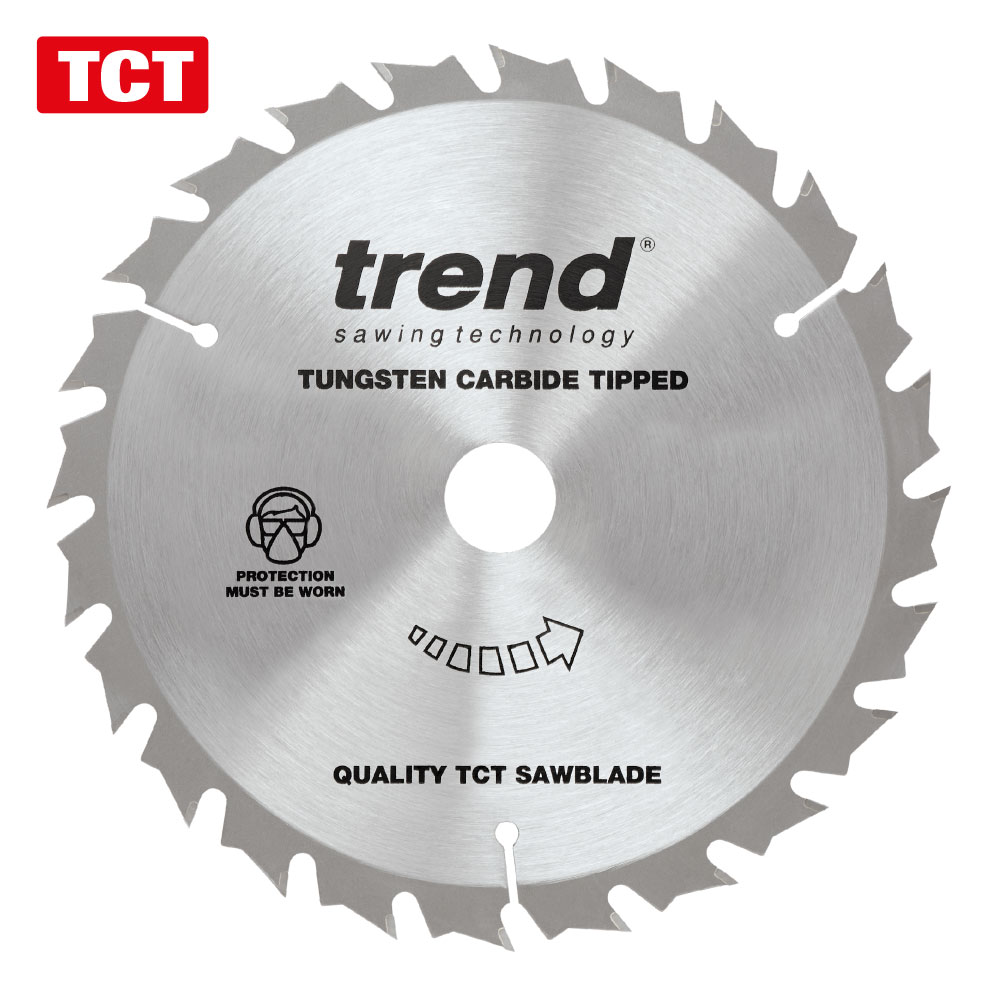

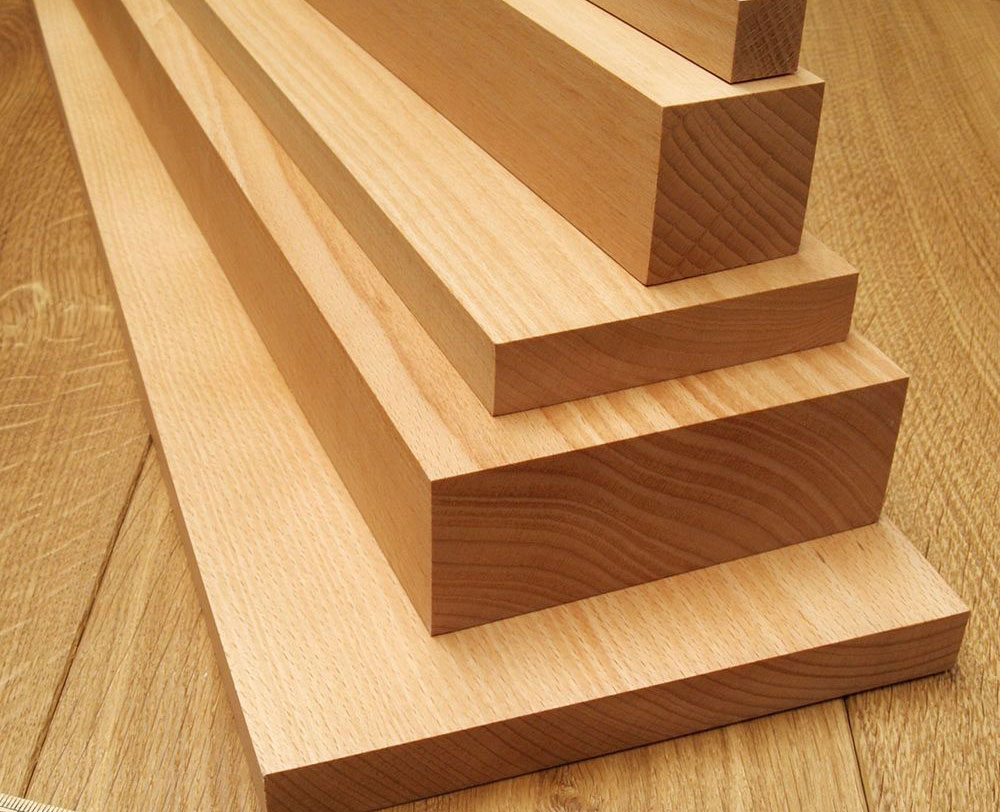

Solid Wood
When cutting solid wood with a sawblade, the type of wood being used, such as hardwood or softwood, as well as its moisture content, density, and grain orientation, can impact the choice of circular saw blade specifications, such as tooth count, hook angle, and teeth geometry. For instance, hardwoods with dense grain patterns may require a saw blade with a lower tooth count and a steeper hook angle to reduce splintering, while softwoods with lighter grain patterns may benefit from a higher tooth count and a shallower hook angle for smoother cuts.
Additionally, the moisture content of the wood should be considered, as wet or green wood may require a blade with larger gullets to prevent clogging, while dry wood may necessitate a blade with smaller gullets for efficient chip removal. Ultimately, selecting the appropriate circular saw blade specifications for cutting solid wood can greatly influence the quality and precision of the woodworking project.
Common types of softwood used in woodworking include pine, cedar, fir, spruce, and hemlock. These softwoods are typically readily available, affordable, and easy to work with, making them popular choices for various woodworking projects such as framing, decking, and furniture construction.
Common types of hardwood used in woodworking include ash, birch, cherry, mahogany, maple, oak, poplar, teak and walnut. Hardwoods are known for their dense and durable nature, as well as their beautiful grain patterns, which make them highly sought after for furniture, cabinetry, flooring, and decorative woodworking projects.
Each type of wood has its own unique characteristics, such as color, density, hardness, and workability, which can affect how it is used in woodworking and the type of tools and techniques required for cutting, shaping, and joining. Woodworkers often choose different types of softwood or hardwood depending on their project requirements, design preferences, and budget considerations.
RIP CUT
Along the wood grain


- Fast Cut
- Low Tooth Count
- Positive Hook
- Rough Finish

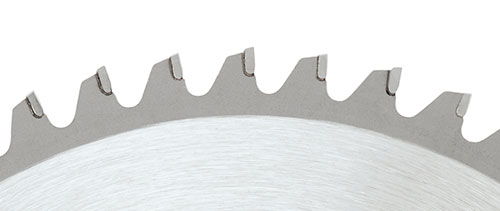
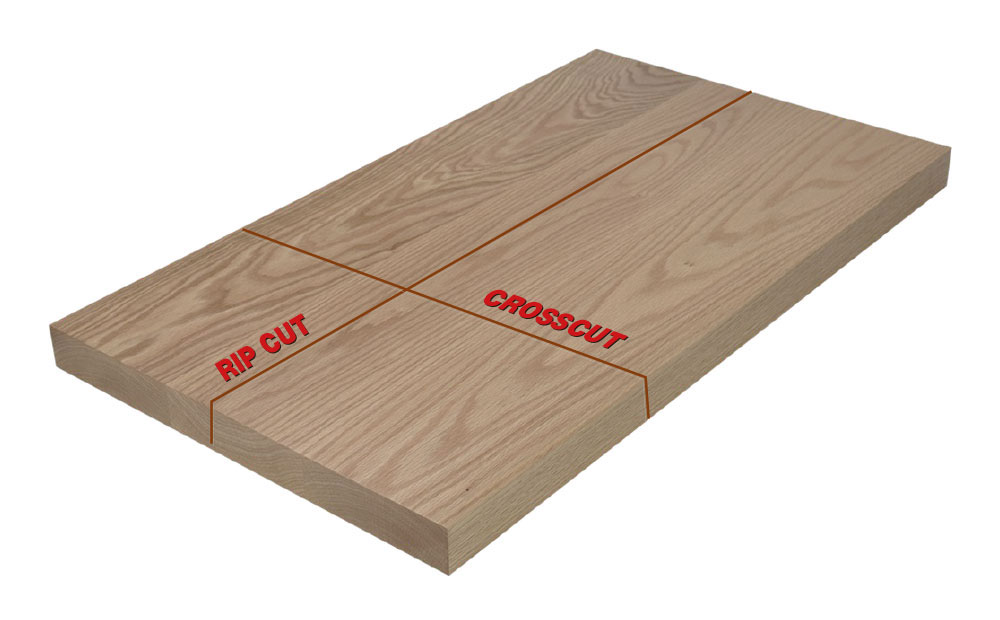

CROSS CUT
Across the wood grain


- Slow Cut
- High Tooth Count
- Typically Negative Hook
- Clean Finish
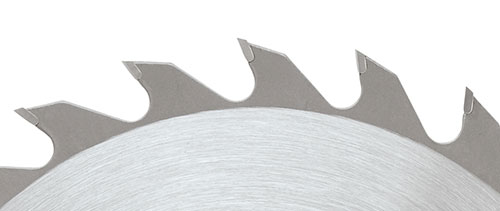
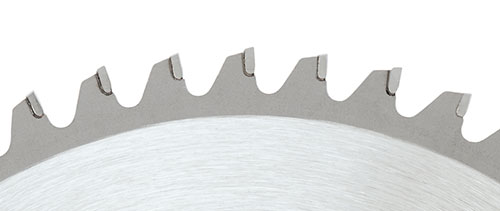
Wood Based
When selecting saw blades for cutting wood-based materials such as plywood, MDF or particle board, it is important to consider the type of material being cut, as well as the desired finish quality and cutting efficiency.
For instance, when cutting plywood or other veneered wood products, a saw blade with a high tooth count and a negative hook angle is typically recommended to minimize splintering and tearout. Conversely, when cutting thicker or denser wood-based materials such as MDF or particle board, a blade with a lower tooth count and a higher hook angle may be more effective in reducing chipping and increasing cutting speed.
In addition, the saw blade's tooth geometry, such as its alternate top bevel (ATB), triple chip grind (TCG), or flat top grind (FTG), can also impact the cutting performance and finish quality of wood-based materials. For example, an ATB saw blade is often preferred for crosscutting and fine finishing work, while a TCG blade is better suited for ripping and cutting abrasive materials such as laminates or melamine.
Ultimately, choosing the right saw blade for wood-based materials depends on several factors, including the material type, thickness, density, and desired finish quality, as well as the specific saw being used and the user's personal preferences and experience.


Aluminium & Plastic
Sawblades designed for cutting aluminium, plastic, and laminated chipboard have several common characteristics, such as the use of carbide-tipped teeth, high tooth counts, and specific tooth geometries.
Firstly, tungsten carbide-tipped teeth are commonly used in sawblades for cutting these materials because they are more durable and can withstand the abrasive nature of these materials without dulling or chipping. Secondly, these sawblades typically have a high tooth count, which helps to produce clean, precise cuts and reduces the risk of chipping or melting the material being cut.
Also, specific tooth geometries are used to optimize the cutting performance for each material. For example, sawblades for cutting plastic often have a negative tooth angle and a triple chip grind (TCG) tooth geometry to prevent melting and ensure smooth cuts. Similarly, sawblades for cutting laminated chipboard may have a similar tooth geometry to prevent chipping or delamination of the board's surface.
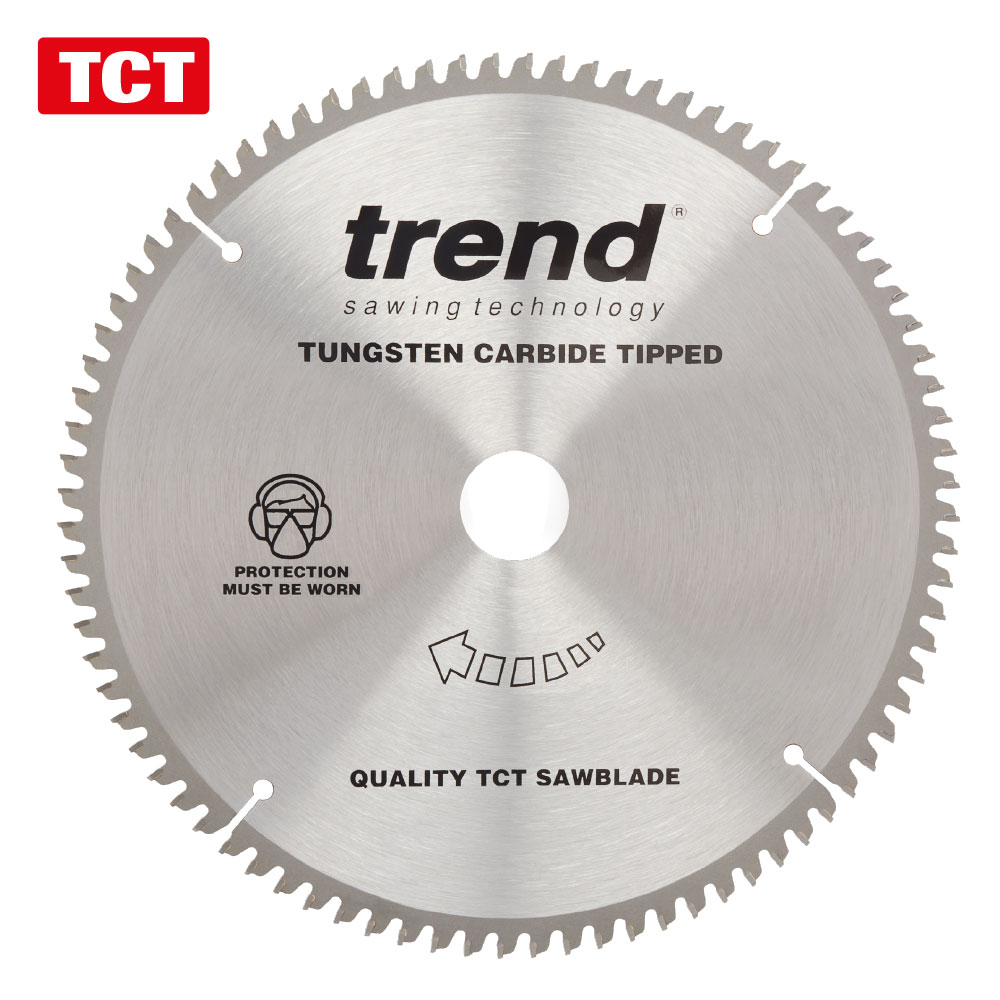

Aluminium & Non-Ferrous Metals
Non-ferrous metals, such as aluminum, copper, brass, lead, zinc, titanium, and nickel, are commonly used in carpentry and construction due to their unique properties. They are utilized for various applications such as windows, doors, roofing, electrical wiring, plumbing pipes, gutters, downspouts, decorative fittings, hardware, and structural components. The choice of non-ferrous metals depends on factors like strength, corrosion resistance, weight, and cost, and proper selection and use of these metals can enhance the durability, performance, and aesthetic appeal of construction projects.
When cutting materials such as aluminum, a sawblade specifically designed for non-ferrous metals should be used. These blades typically have a high tooth count, often referred to as a "metal cutting" or "non-ferrous cutting" blade, and feature carbide-tipped teeth. The carbide tips are designed to withstand the abrasive nature of aluminum, which can quickly wear down regular saw blades. Additionally, a blade with a low hook angle and a negative rake angle is typically recommended for cutting aluminum to reduce the risk of grabbing and kickback.
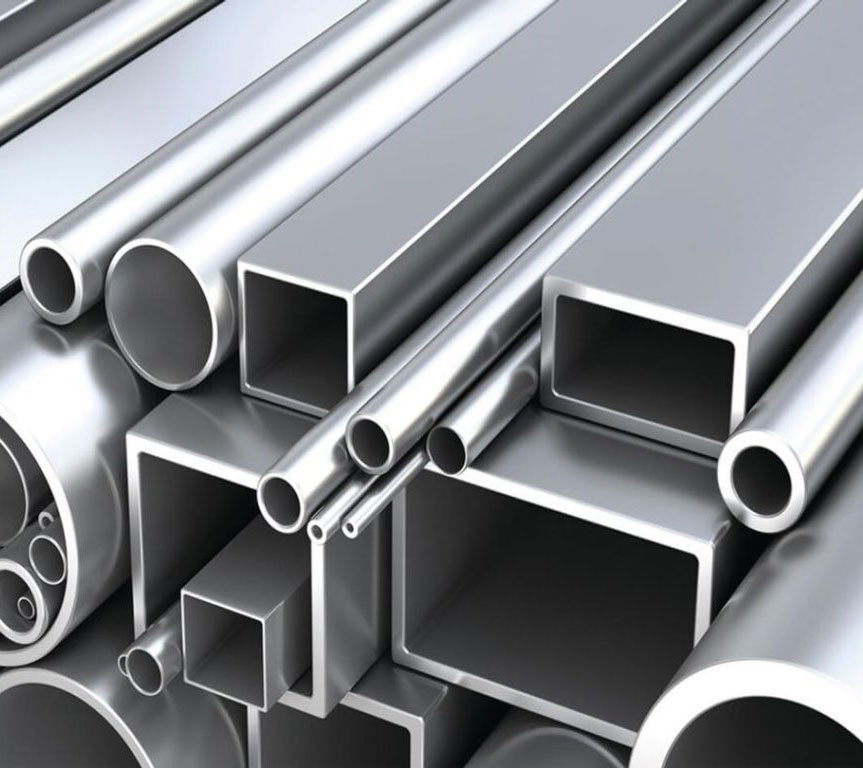

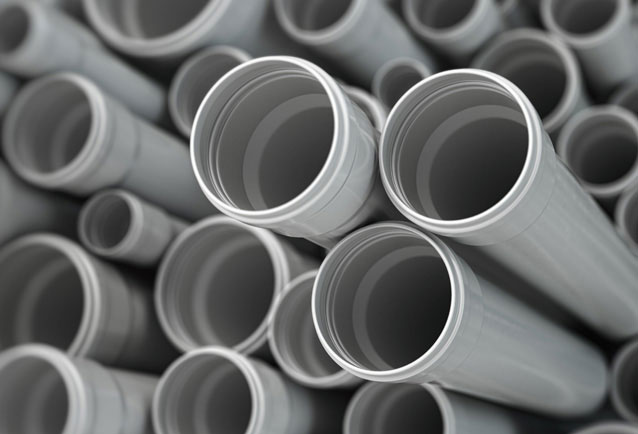

Plastic Sheet & Pipe
Plastics are widely used in construction due to their durability, lightweight nature, ease of installation, and resistance to moisture, chemicals, and decay. Common types of plastics used in construction include PVC for pipes, fittings, and vinyl siding; HDPE for underground utility installations and waterproofing applications; PC for skylights, roofing sheets, and glazing materials; ABS for plumbing and drainage systems; PS for insulation applications such as EPS foam boards; PET for insulation, waterproofing membranes, and roofing materials; and PP for pipes, fittings, and geotextiles. These are just a few examples of the many types of plastics used in construction, and the specific type used depends on the application, performance requirements, and building codes/regulations. Plastics are integral to modern construction and continue to be used in a wide range of applications in the industry.
When cutting plastic materials, such as PVC, acrylic, or polycarbonate, a sawblade with a high tooth count and a low tooth angle, such as a triple chip grind (TCG) or a modified alternate top bevel (MATB) blade, is often preferred. These blades are designed to produce clean, chip-free cuts in plastic without melting or melting the material. Blades with anti-stick coatings or specially designed tooth geometries, such as hollow ground or grind-tooth blades, can also help reduce heat buildup and prevent material from melting onto the blade.
Laminated Chipboard
Laminated chipboard, also known as particleboard, is a versatile and affordable material commonly used for furniture and cabinetry. It is made by compressing wood particles or chips with adhesive and then covering the resulting board with a layer of laminate. There are various types of laminated chipboard available, including melamine-faced, veneered, high-pressure laminate, and low-pressure laminate
The type of sawblade needed for laminated chipboard depends on the specific type of chipboard. For melamine-faced and veneered chipboard, a circular saw blade with fine teeth, such as a carbide-tipped blade, is recommended to reduce chipping and splintering. For high-pressure laminate chipboard, a circular saw blade with a carbide-tipped blade and a high RPM motor is necessary due to the toughness of the material. Low-pressure laminate chipboard can be cut with a regular circular saw blade with fine teeth.
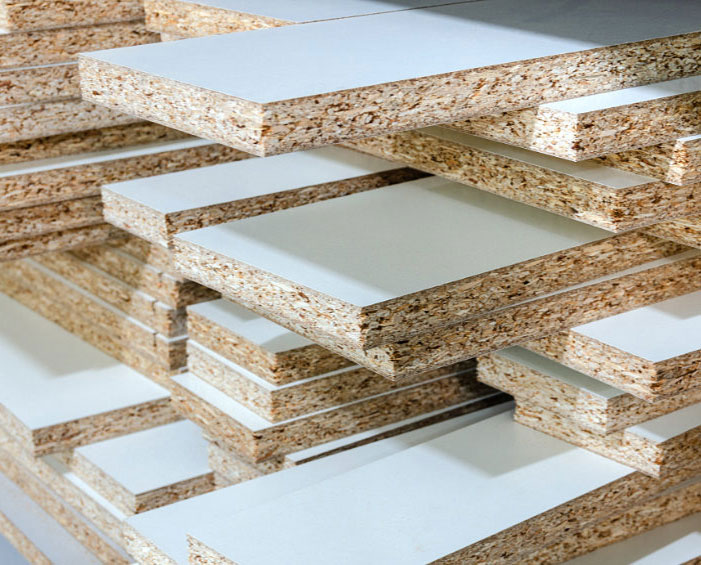

Ultra-Hard Materials
Polycrystalline diamond (PCD) saw blades are cutting tools used in various woodworking and machining applications. PCD is a synthetic diamond material that is extremely hard and wear-resistant, making it ideal for cutting through tough materials such as compact laminate, fibre cement cladding and other abrasive materials. PCD saw blades are known for their exceptional durability, long lifespan, and high cutting performance. They are commonly used in woodworking, cabinetry, and furniture making, where precise and clean cuts are required.
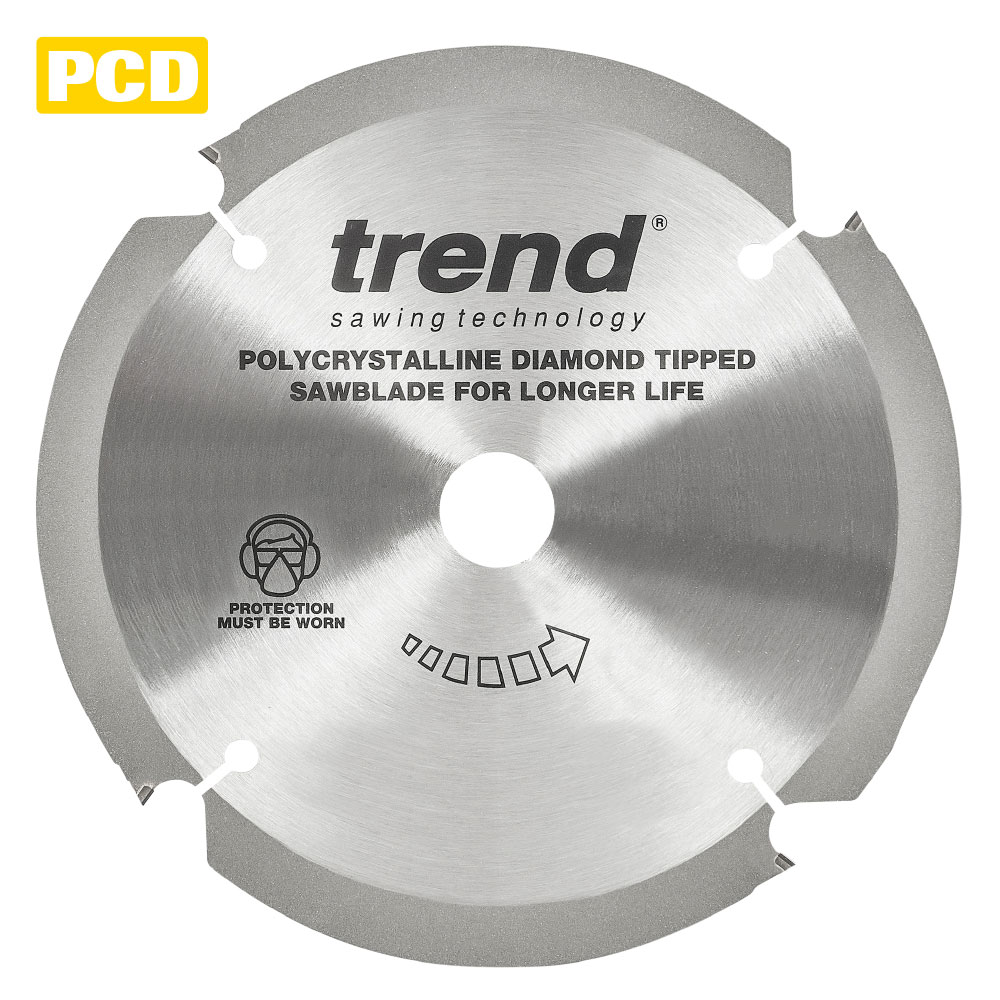

Compact Laminate
Compact laminate is a type of high-pressure laminate (HPL) that is used in various applications where durability, moisture resistance, and high performance are required. It is made by layering multiple sheets of kraft paper soaked in phenolic resin, which are then pressed under high heat and pressure to create a dense, solid panel. Compact laminate is known for its strength, toughness, and resistance to impact, moisture, chemicals, and UV radiation, making it ideal for demanding environments. PCD sawblades are an excellent choice for cutting compact laminates due to their durability, precision, heat resistance, low maintenance, and versatility. They ensure clean cuts, reduce chipping, and offer long-lasting performance, making them ideal for professionals and DIY enthusiasts working with compact laminates in various applications.
Compact laminate is commonly used in commercial and residential settings for a wide range of applications. Some common uses of compact laminate include: Countertops, Work Surfaces, Partitions, Furniture and Cabinetry:
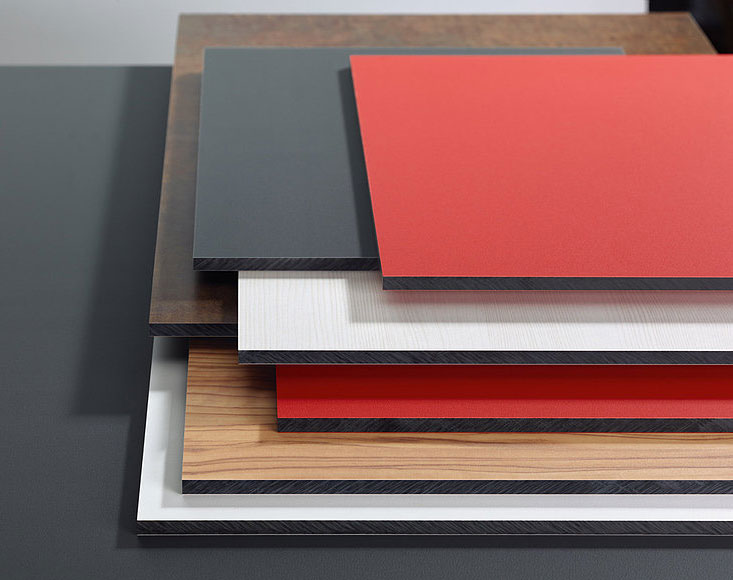

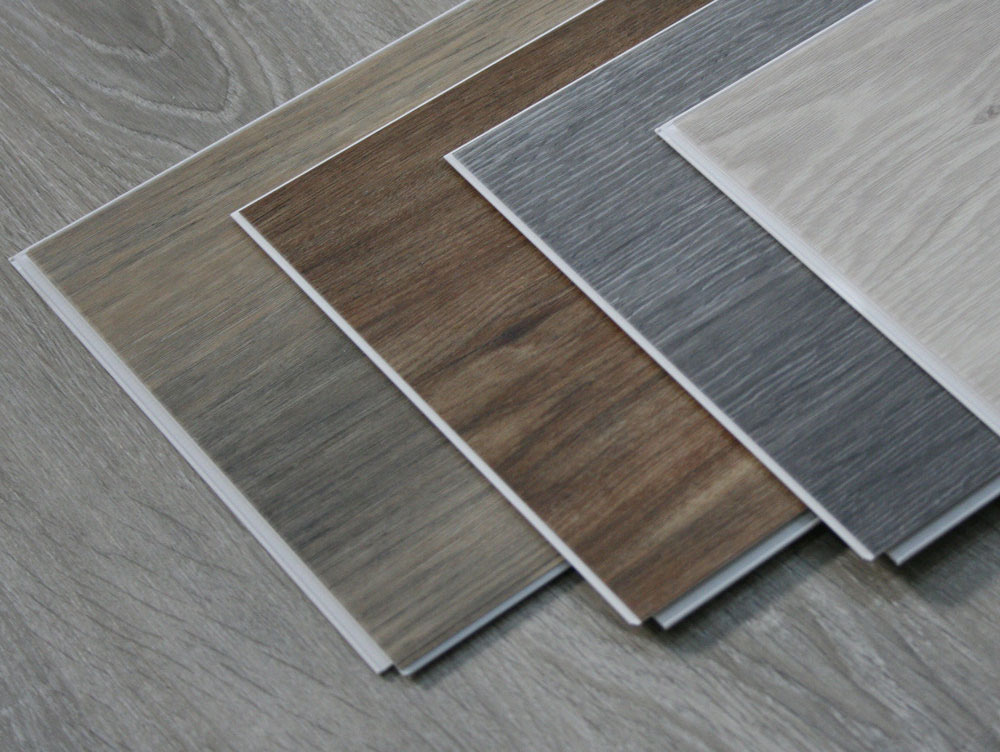

Laminate Flooring
Laminate flooring is a popular type of flooring that consists of multiple layers of material bonded together to create a durable and attractive flooring surface. It is made from several layers, typically including a high-density fiberboard (HDF) or particleboard core, a decorative layer that mimics the appearance of wood or other materials, and a protective top layer that provides resistance to wear, moisture, and staining.
Laminate flooring is commonly used in residential and commercial settings due to its affordability, durability, and ease of installation. It is often used in areas such as living rooms, bedrooms, hallways, and offices, as well as in some commercial spaces like retail stores and restaurants. Laminate flooring is known for its realistic wood or tile appearance, wide variety of styles and colors, and relatively low maintenance requirements.
Laminate flooring often requires precise cuts, especially around corners, edges, and obstacles. PCD saw blades are known for their exceptional cutting accuracy and ability to produce clean, straight cuts with minimal chipping or splintering, resulting in professional-looking results.
Fibre Cement Cladding
Fibre cement cladding is a type of building material used for exterior wall cladding that is known for its durability, versatility, and low maintenance requirements. It is made from a mixture of cement, cellulose fibers, and other additives that are formed into sheets or planks and then cured under high pressure and temperature. The resulting material is highly resistant to fire, moisture, rot, pests, and UV radiation, making it a popular choice for both residential and commercial applications.
PCD sawblades are a versatile choice for cutting fibre cement cladding as they can be used on different thicknesses, textures, and finishes of cladding, as well as other construction materials such as plywood, MDF, and solid wood. They are known for their exceptional hardness and durability due to their diamond-tipped teeth, which can withstand the abrasive nature of fibre cement cladding and maintain sharp cutting edges for extended periods of time.
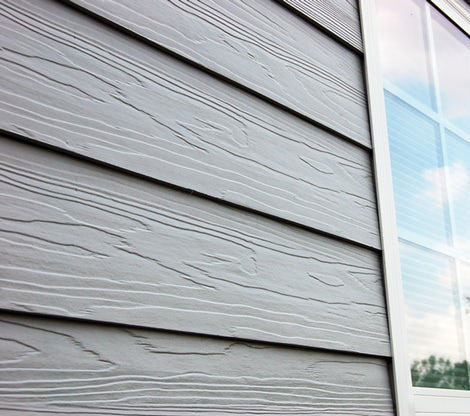

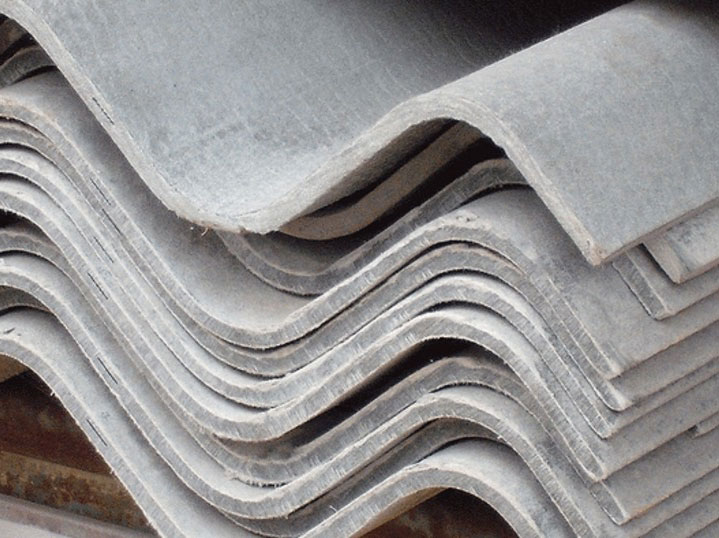

Fibre Cement Roofing
Fibre cement roofing is a type of roofing material made from a mixture of cement, cellulose fibers, and other additives. This mixture is formed into large sheets or panels that can be used for roofing applications in both residential and commercial buildings. Fibre cement roofing is also known for its durability, weather resistance, and low maintenance requirements.
Cutting fibre cement roofing can generate heat due to friction, and PCD sawblades are designed with special heat-resistant coatings and geometries that help dissipate heat during cutting. This prevents the material from melting or charring, resulting in cleaner cuts and minimizing the risk of damaging the roofing. PCD sawblades are also known for their ability to produce clean cuts with minimal dust and debris compared to other types of saw blades. This can help create a cleaner and safer work environment, reduce the need for clean-up, and minimize the risk of inhaling harmful particles.
